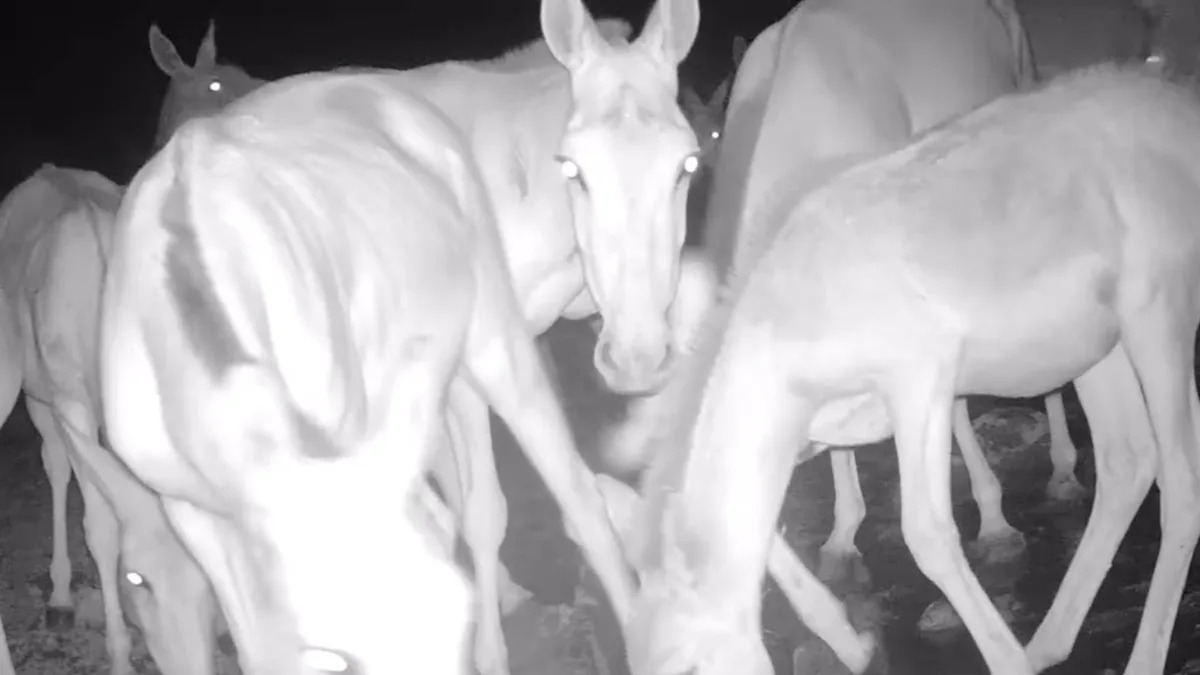Hidden trail cameras, strategically placed in Altyn-Emel National Park in Kazakhstan, delighted viewers with a rare glimpse of a small herd of kulans, listed as Endangered in 2024 on the IUCN Red List.
A subspecies of Asiatic wild ass (Equus hemionus), kulans belong to the same genus as horses, donkeys, and zebras. The kulans in Kazakhstan were all but extinct in the early 20th century, as Kazinform International News Agency detailed.
Thanks to reintroduction efforts, however, the kulan is on the rise again — enough to pose for a night vision trail camera, which captured footage shared online.
Trail cameras may be undervalued in residential areas in favor of smart security cameras, but they are invaluable within the scientific community. Trail cameras are relatively simple devices, though they are powerful monitoring tools.
These easy-to-place cameras document presence, population, migratory patterns, and habits. Their compact form offers observers a noninvasive, cost-effective approach that supports reintroduction efforts.
As far as the kulans are concerned, successful reintroduction is paramount. Kulans are ecologically significant grazers, meaning their feeding behaviors can affect dry biomass on the steppe, reducing the chance of wildfires, according to the Frankfurt Zoological Society (FZS).
It’s easy to dismiss the loss of the kulan and related subspecies as unimportant throughout the region. However, without them, the health of the steppe’s ecosystem could be impacted, potentially affecting the region’s carbon sink and water retention capabilities.
Plus, according to the FZS, kulans are a cultural symbol of Central Asian identity, a major part of regional history and folklore. Rehabilitation efforts can also do more than stabilize ecosystems; they can increase eco-tourism, create new jobs, and contribute to local economies.
The FZS reported that several kulan releases were planned for 2025, with 2024’s releases successfully adapting and even introducing a couple of foals.
Successful kulan reintroductions are echoed by the return of Przewalski’s horses as well, as Kazinform International News Agency also reported. Przewalski’s, also known as takhis, have been described as the last truly wild horses in the world. Like kulans, they were nearly extinct but have a new lease on life thanks in large part to reintroduction efforts in Kazakhstan.
Join our free newsletter for good news and useful tips, and don’t miss this cool list of easy ways to help yourself while helping the planet.

